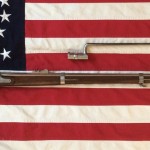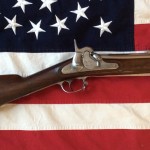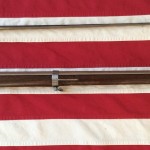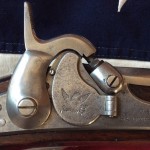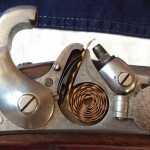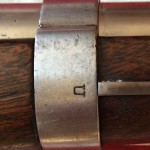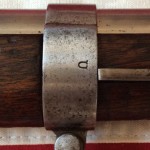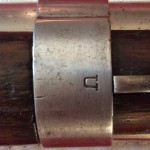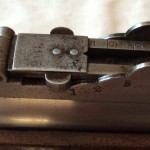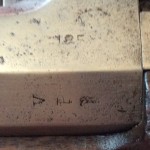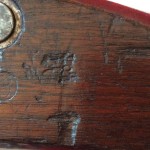- Harpers Ferry U.S. M-1855 Rifle Musket
- 1858 Harpers Ferry Rifle Musket, Stock
- 1858 Harpers Ferry Rifle Musket & Socket Bayonet
- 1858 Harpers Ferry, Lock Plate
- Harpers Ferry Maynard Tape Primer Device
- Harpers Ferry Rifle Musket, Rear Barrel Band
- Harpers Ferry Rifle Musket, Barrel Band & Sling
- Harpers Ferry Rifle Musket, Forward Barrel Band
- Harpers Ferry Rifle Musket, Long Base Adjustable Rear Sight
- 1858 Harpers Ferry Rifle Musket, Proofs
- Harpers Ferry U.S. M-1855 Rifle Musket, Cartouches
What makes this weapon so unique is the Maynard Tape Primer designed by “Edward Maynard” for more rapid firing of the weapon. Dr. Edward Maynard, a dentist with an interest in firearms, embedded tiny pellets of priming material in thin strips of paper, then glued a second strip of paper on top of the first, creating a “tape” of primer (similar to a cap gun you would have played with as a child). The tape could be manufactured quickly and cheaply, since paper was much less expensive than copper. Maynard also developed an automatic feeding system that would advance the tape when the musket’s hammer was cocked. The hammer not only detonated the primer, but would also automatically cut the paper, thus removing the spent portion of the primer tape. The system worked well under controlled circumstances but proved to be unreliable in the field. The tape was delicate and would tear but the biggest problem was the paper strips were susceptible to adverse weather and even humidity.
This model proved one of the staple arms of the Civil War, and was the first U.S. martial arm firing the Minie bullet in .58 caliber.
This example is an early model (Type 1) because of the long base adjustable rear sight, similar to the 1853 Enfield’s, brass nose cap and the lack of a patch box.
If you have any questions about this weapon or any of the other weapons in the Civil War Arsenal feel free to contact me at civilwararsenal@yahoo.com attn: Gene West

